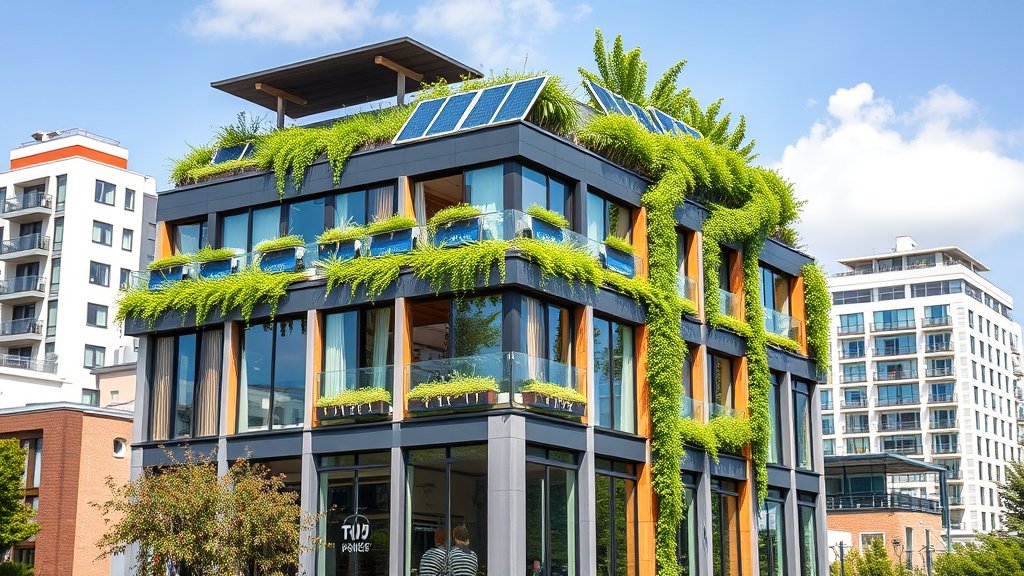Imagine a world where buildings breathe, coexist with nature, and leave the faintest trace on our planet. This isn’t some futuristic utopia—it’s the heart of sustainable architecture. Today’s architects and builders are increasingly embracing materials and methods that not only reduce environmental harm but also enhance human well-being. The shift towards ecologisch bouwen is more than just a trend; it’s a conscious effort to meet climate goals, counter rising energy prices, and ensure a healthier living environment.
So what makes a building material “sustainable”? Well, these materials are designed to minimize environmental impact through their entire lifecycle—from production to disposal. They’re often derived from renewable resources, recycled content, or are biodegradable. Think of materials like recycled concrete, hemp, flax, FSC-certified wood, and even good old loam. Each of these comes with its own set of benefits that go beyond being eco-friendly. They contribute to healthier indoor climates and often bring down energy costs in the long run.
Choosing materials that make a difference
Let’s talk specifics. Recycled concrete is making waves in construction as it reduces the need for new raw materials and cuts down on landfill waste. Imagine tearing down an old building and using its very bones to build anew—talk about coming full circle! Then there’s hemp, which grows faster than you can say “sustainable,” absorbs CO₂ while growing, and offers excellent insulation properties.
Flax and wood are other great examples. Flax is flexible, lightweight, and renewable—perfect for insulation or as a component in composite materials. Wood, especially when sourced responsibly (look for FSC certification), offers not just structural integrity but also aesthetic beauty that synthetic materials can’t match. And let’s not forget loam—a natural material that’s been used for centuries due to its breathability and moisture-regulating properties.
Recycled and renewable options
When it comes to insulation, traditional materials like fiberglass have a high environmental footprint. But alternatives like hemp insulation, sheep wool, cellulose (made from recycled paper), and cork are changing the game. These materials are not only effective insulators but also renewable and biodegradable.
For instance, hemp insulation is breathable and mold-resistant—ideal for maintaining indoor air quality. Sheep wool might sound old-school, but it’s fantastic for moisture regulation and is fully renewable. Cellulose is another star player; it’s made from recycled paper and treated to be fire-retardant. Cork, harvested without harming the tree, offers excellent thermal insulation while being naturally resistant to moisture and pests.
Energy efficiency for a greener home
Energy efficiency isn’t just about slapping some solar panels on the roof (though that’s great too!). It’s about creating a home that works with nature rather than against it. Triple glazing for windows can drastically reduce heat loss in winter and keep your home cool in summer without cranking up the AC.
Green roofs—covered with vegetation—provide natural insulation and help manage stormwater. Imagine looking out your window at a mini-meadow instead of dull shingles! Then there’s cellulose insulation for your sloped roofs, offering both thermal efficiency and soundproofing. Bamboo floors not only look chic but are incredibly durable and grow much faster than traditional hardwoods.
Benefits beyond the environment
Opting for sustainable building materials does more than just help Mother Earth. They significantly improve indoor air quality by reducing pollutants and regulating humidity levels. This means fewer allergies, less mold, and overall better health for those living inside.
Sustainable materials also tend to be more durable, reducing the need for frequent replacements or repairs. This longevity translates into lower maintenance costs over time. Plus, many governments offer incentives like subsidies or tax breaks for using eco-friendly materials—so you’re saving money while saving the planet.
How you can start small
Diving into sustainable architecture doesn’t mean you have to remodel your entire house overnight. Start small with easy changes like switching to water-based paints or using natural pigments. Choose solvent-free adhesives when doing minor repairs or installations.
Ensuring natural ventilation can be as simple as opening windows regularly or installing vents that don’t rely on electricity. Cleaning with biodegradable products is another effortless switch that makes a big difference over time.
The future of sustainable building
The future looks green! Stricter laws and regulations are pushing for nearly energy-neutral buildings (BENG standards) and prioritizing circular construction in public projects. Subsidies are available for green roofs, solar panels, and other eco-friendly upgrades.
The shift towards sustainable building materials is here to stay. By choosing these materials, we’re not just making our homes better—we’re making the world better too.




